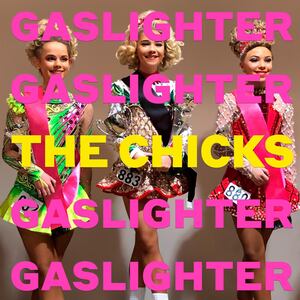It was the kind of scorching July day when merely standing and breathing outside produced projectile streams of sweat, as if the sun was a heat lamp that had been lowered directly three inches from your face.
The suffocating humidity that amplified the heat made for an unpleasantness we’ve been conditioned to treat like a summer challenge. How were we going to find joy and fun in defiance of the swelter? Where’s the party? Where are the drinks? Where’s the dance floor and all of our friends?
It’s an unmistakable summer feeling—brutalized, yet invigorated—and that blistering Friday was primed for revelry. But that’s not what any of us wanted.
Outside it felt like summer. Inside our hearts—anyone allergic to corny pronouncements should stop reading immediately—it was a damp, drizzly day in the fall, with the overcast clouds of everything going on in the world metaphorically forcing us into retreat, both into our houses and into ourselves.
These feelings came flooding out over the weekend as music fans listened to Taylor Swift’s surprise new album, folklore, on repeat.
The album, with reviews that rival the best of her career, is a departure for the singer, a collaboration with The National’s Aaron Dessner as well as reigning pop mastermind Jack Antonoff that, with Bon Iver popping by for a duet as well, scaled back the brazen bombast and candy-colored pyrotechnics of her most recent projects for something more somber and meditative.
Released amidst four months of mounting anxiety and exasperation, folklore seemed to capture the angst, loneliness, longing, and nostalgia swirling through our collective existential crisis. Quote Patti LuPone: “A perfect album for another month of lockdown.”
That seemed to have been the goal.
As Swift wrote when she announced the surprise album drop, “Tonight at midnight I’ll be releasing my entire brand new album of songs I’ve poured all of my whims, dreams, fears, and musings into...Before this year I probably would’ve overthought when to release this music at the ‘perfect’ time, but the times we’re living in keep reminding me that nothing is guaranteed. My gut is telling me that if you make something you love, you should just put it out into the world. That’s the side of uncertainty I can get on board with.”
There’s something funny and slightly embarrassing, but also entirely relatable, about Swift’s unveiling of folklore, a diarist’s confessional album she announced in a heartfelt letter that made a big to-do about needing to articulate the emotions of the moment. That feeling, yeah, we get it. The burning desire to Say Something About What’s Going On. (If only we could all say it through such catchy lyrics.)
Maybe it’s not a surprise that music has helped us feel the things that we need to feel and say the things we want to say during these strange times. That’s what music always does. What’s particularly interesting about this lockdown era of music is that it’s been a run of albums that could arguably be ruled career-best almost exclusively from female artists.
With that comes not only the bliss of entertainment during hard times, but a diverse array of music to help digest, deflect, and process everything that is going on, depending on what the emotions of the day require.
It is, again, remarkable, and certainly noticeable, that it’s the industry’s top female artists who have provided this service in recent months. Meanwhile top-selling male acts are engaging in petty feuds, thwarting coronavirus safety guidelines with crowded concerts during a pandemic, or, uh, running for president. Either way, we should be grateful for these women.
At the start of all this, when the realities of the shutdown were still a shock and people were grappling with what it meant to be isolated from friends and their communities, Dua Lipa released Future Nostalgia, a banger of a club album that brought much-needed serotonin to our dystopian depression, turning quarantine into a dance party.
When Fiona Apple released Fetch the Bolt Cutters three weeks later, it was a major event. For those at a boiling point—the first of what would be many in the months ahead—it wasn’t just permission to rage, but an invitation and maybe even demand to. It was an album about freedom from oppression, playing to a crowd both confined by circumstance but confused by the malfeasance and ineptitude of those in power.
Then came Lady Gaga’s Chromatica, a timely musical ticket to escape the planet entirely. The call to the dance floor was still there, echoing Dua Lipa’s siren. This time it wasn’t for emotional release, but in protest. It implored those with trauma to recognize that you can still surrender yourself to bliss while carrying that weight; that you can be bitter and survive; that you can live in all of the dichotomies of a moment and do so without guilt.
An emotional musical bounty followed. Chloe x Halle’s Ungodly Hour was a sumptuous celebration of rising Black talent released amidst a national conversation about race. More, the duo’s flawless, silky harmonies played like a balm, a salve for the burns of a world on fire.
Phoebe Bridgers’ Punisher, with occasional psychedelic notes of disorientation, tackled broken faith and desperation.
Haim’s Women in Music Pt. III arrived when people were at their antsiest and most stir crazy, an album that somehow made you feel lighter and unburdened, like you’re basking in the sun.
Jessie Ware’s What’s Your Pleasure?, released the same day, upped the ante: a disco record that somehow calibrated the exact feeling of needing to “dance it off” while also still recognizing and hurting from the pangs of loneliness and, sure, horniness that were wearing people down.
When Gaslighter from the Chicks, formerly the Dixie Chicks, came out in mid-July, it was instantly hailed a masterpiece. It was both implicitly and overtly political, in that it was three women being frank about their anger, resentment, resilience, and optimism. The music was so hyper-specific to their respective love stories—and falling-out-of-love stories—that it resonated in a way that became instantly universal. It said: Be mad, be petty, be pissed, but also be hopeful and be healthy.
All of these women’s music has, albeit perhaps unintentionally, created a musical mood ring for the intense feelings of these months. We needed catharsis and distraction, then we needed frustration, then we needed indulgence, then we needed anger, and then we needed to really, deeply feel it all.
I don’t know what it means that all of this notable music has been made by women, but it has been profound. It’s also been reassuring at an uncertain moment in pop culture.
The TV industry is confronting the reality that its fresh content might run out, while films are postponing release dates until it’s safe to open—and crowd—theaters again. And those industries haven’t truly been able to pivot with the same immediacy that someone like Taylor Swift could, responding to our complicated feelings about what’s going on in real, creative time.
The trend seems to be continuing, too. I can’t think of a project more primed to meet the recent cultural revolution as Beyoncé’s Black Is King visual album. And there are already a slew of other major projects from female artists already announced on a horizon, from Dua Lipa’s just-announced remix collaboration with Madonna and Missy Elliott to new music from Billie Eilish coming at the end of the month.
The madness shows no sign of relenting. Thankfully, neither does the music.



